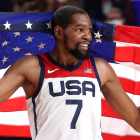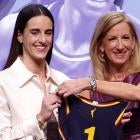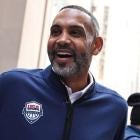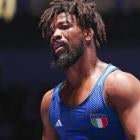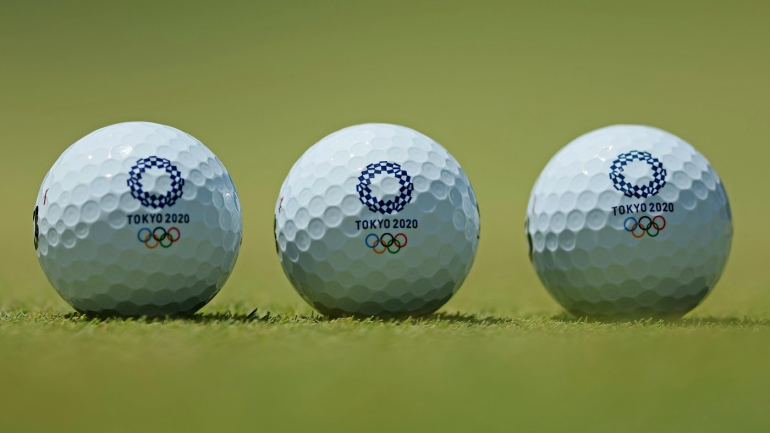
The Olympics are compelling for myriad reasons, but chief among them is how unique everything seems for three weeks every four years. Obviously, the athletes competing in the 2020 Tokyo Olympics have been training, working and competing for most of their lives, but there's a novelty in seeing just a blip of that still-developing strip of film once ever few thousand days.
This is why it works. This is why it's easy to go from "I've never heard of team handball" to "Let me tell you about the greatest sport on the planet" in the span of a weekend. It's new, fresh and fleeting. Following the NBA or MLB seasons is an absolute grind. This is a vapor. Though it is not completely out of the ordinary to the athletes in attendance -- in fact, it is yet another competition in a never-ending string of them -- it is certainly special to us.
This also doubles as the problem for sports we watch all the time, like basketball, soccer and golf. The ubiquity of those sports in our everyday viewing experience makes them difficult to invest in without a hook. Hoops has its hook. Us against them. I think about the 2008 men's basketball final often. Spain vs. the United States. Nobody wanted the weight of the country in crunch time, so Kobe Bryant took the reins and Spain wore silver on the podium. The hook for hoops is the same as what we see every two years at the Ryder Cup. Big personalities galvanized by the colors they're wearing.
Golf has an Olympics problem. There is no hook, nothing to differentiate it from everything else we see. A reduced field on a Tom Fazio course playing as individuals for 72 holes of stroke play with no cut? Yeah, I already watched the 2020 CJ Cup at Shadow Creek.
I understand why the Olympics wants to do things like this. As pointed out on the "No Laying Up" podcast on Sunday evening, you start looking around at all the most-revered events in the world -- the Masters, both Opens and the PGA Championship -- and they're all 72 holes of stroke play. You don't want to be a gimmick.
But you also don't want to be irrelevant. Who exactly is the audience for Olympic golf? Those inside of it who watch it all the time are not enamored with the setup or format, and those outside of it who might tune into anything the Olympics has to offer are more likely to say, "Well this exact thing is on every week, I can't watch badminton for another four years." You're missing both audiences here.
There are two ways I think the Olympics could adjust its competition to bring true excitement into the weeks ahead.
Team match play: You know what event I find myself falling for every year even though I only know a handful of the participants (which, by the way, describes golf in the Olympics)? The NCAA Golf Championships. You know why I find myself falling for it every year? Because it's a team event with real stakes and real emotions. Open up the field a little bit here and create three-man or three-woman teams, and maybe even allow countries to enter multiple squads.
Are you interested in Justin Rose and Henrik Stenson trying to win a medal by shooting another 68 in two lifetimes full of them? Or are you interested in Sungjae Im trying to down Justin Thomas on the last hole of a match to move on to face Great Britain for the gold medal with Si Woo Kim, Collin Morikawa, Xander Schauffele and K.H. Lee nervously unable to watch?
One of the funnier and more compelling shots on the PGA Tour of the last few months was Sam Burns traipsing out for the Harris English-Kramer Hickok eight-hole playoff at the Travelers Championship. I remember him telling CBS Sports' Amanda Balionis that it was so much tougher and more emotional to watch his friend, Hickok, play in a playoff than it was to play in himself. This is what I want! It's not the Ryder Cup, but team golf at the Olympics is at least a facsimile of it on a bigger global stage.
Mixed-team match play: I was reading a piece on the Ringer the other day, and I was introduced to mixed-team medley relay in swimming. Buddy, it is wild.
And since I watched some of those clips, I couldn't stop thinking about how much fun a four-ball match would be with Justin Thomas and Nelly Korda trying to pull off running, flying side bumps after chip-ins against Nasa Hataoka and Hideki Matsuyama. Or Danielle Kang and Patrick Reed going against Minjee Lee and Adam Scott. To me, that is standard deviations more compelling than the current setup.
It's difficult to manufacture history -- even more so when the top golf events in the world had a 100-year head start. Like letting Usain Bolt start 15 meters into a race and saying, "Go catch him." But the goal here should not be to catch Usain Bolt but rather to run an entirely different race altogether. Sure, you might not become as historically relevant as the Masters or Open Championship, but you were never going to be anyway. You were never going to run down Usain Bolt.
However, by taking a leap of faith and creating something that some might see as a sideshow, you at least give yourself the opportunity to own a small corner in the golf world that is different and interesting. Those who do this every single week are so hungry for something fresh and intriguing that I almost believe changing the event to 73 holes of individual stroke play would feel like a tidal wave.
In the process, by flipping these weeks of men's and women's individual stroke play into something more team-oriented, you engender global interest by creating the most compelling form of competition for casual bystanders at the Olympics: Country against country for a thick, heavy medal. You may even unwittingly capture both audiences at the same time.













